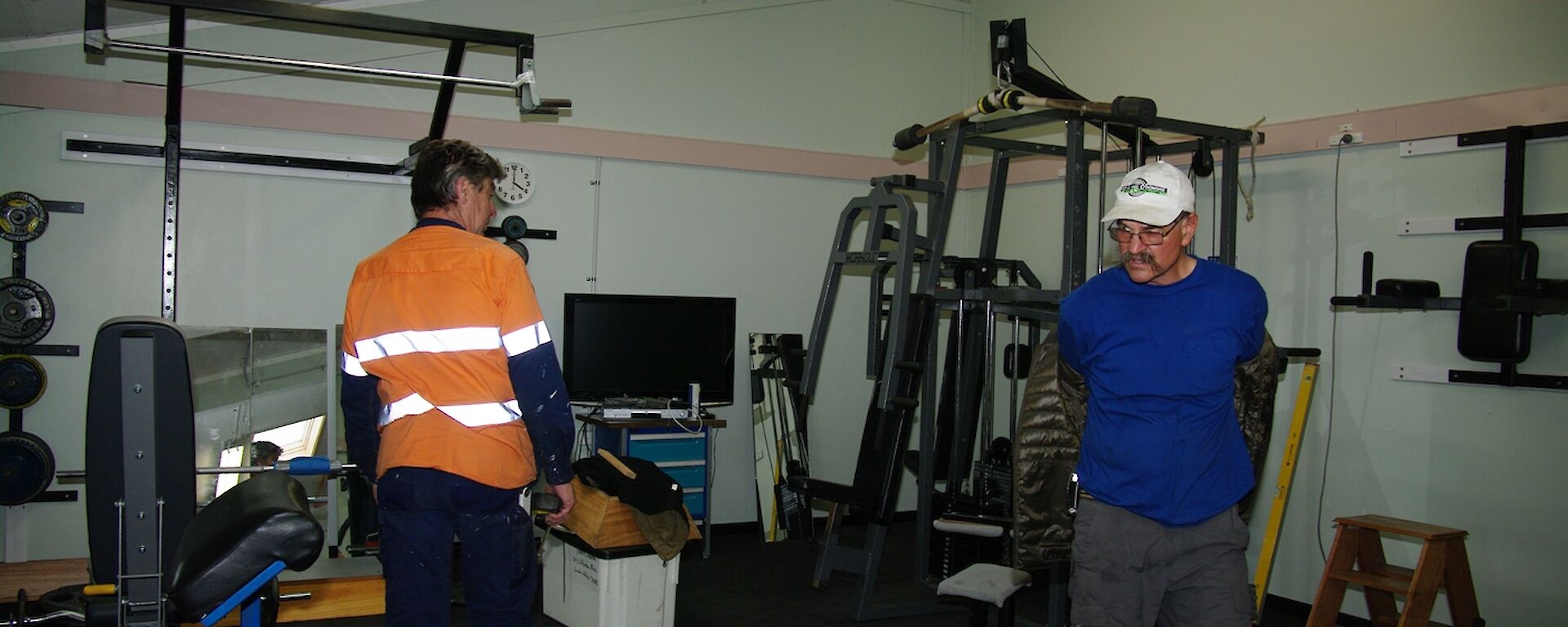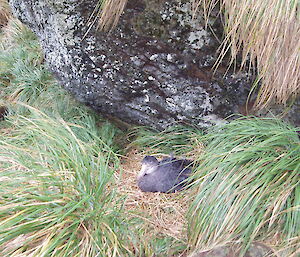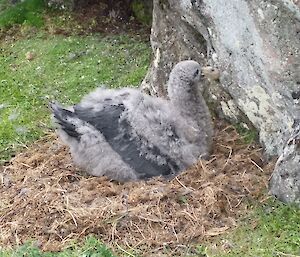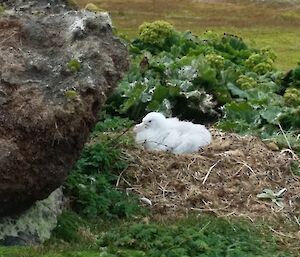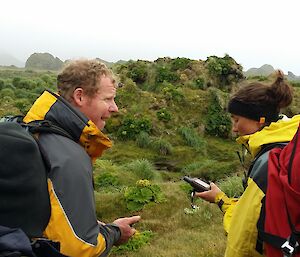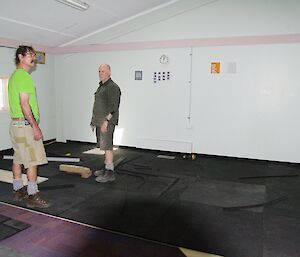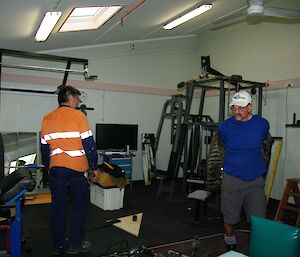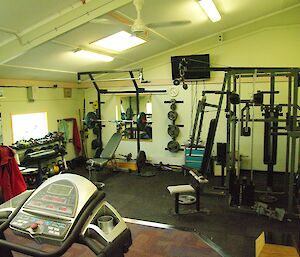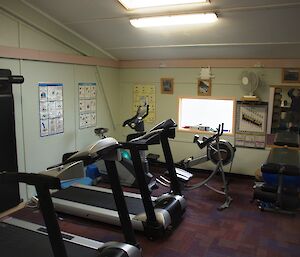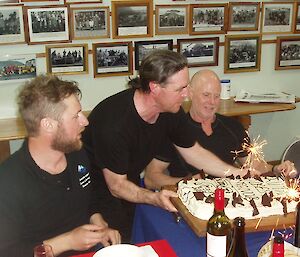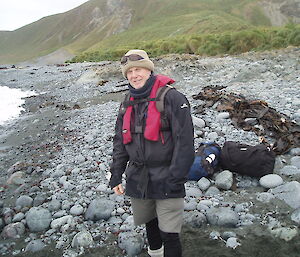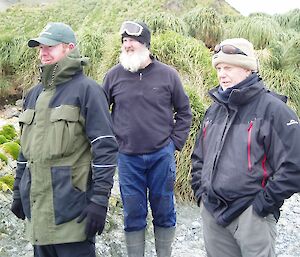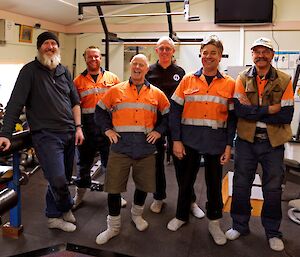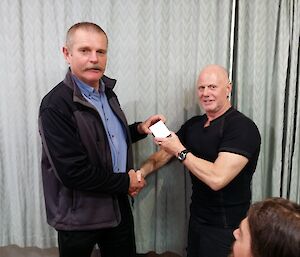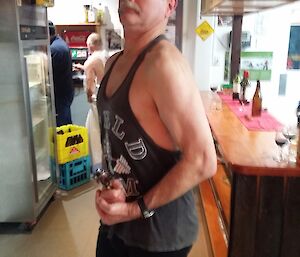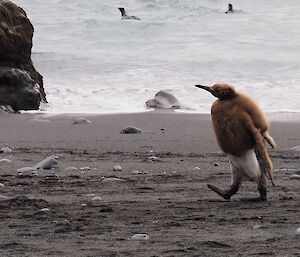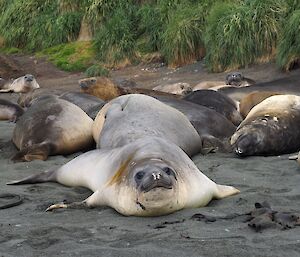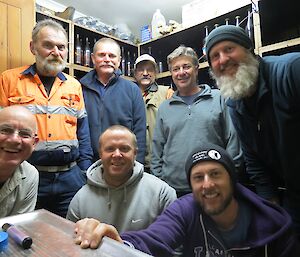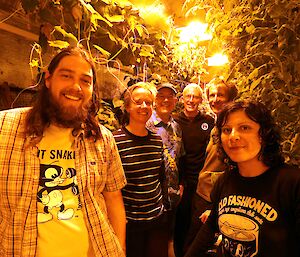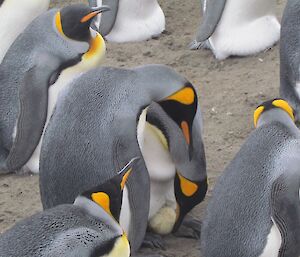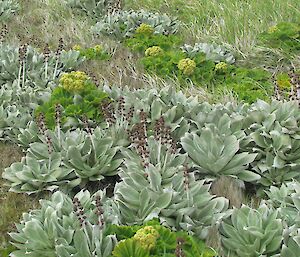With a couple of days rostered off duty, an opportunity arose for me to tag along with the bird taggers of Macquarie Island, the albatross and giant petrel research project team of Kate and Jarrod, along with TASPAWS wildlife ranger Mike, to band northern giant petrel chicks. The morning was a usual Macca day, light to moderate rain was forecast and I slept in after a night shift at the weather office. I headed out early afternoon after being given the green light to access the Special Management Area by TASPAWS ranger in charge Chris.
I went along the Island Lake track in about 50 metres visibility in fog along the escarpment to Island Lake, then headed west to Langdon Bay along the coastal featherbed. The rain did hold off which was fantastic! After some radio chit chat I found the team having a break. After a briefing of what was required we split up and headed to the pre-marked nests using GPS units. The nests had been previously located in September by search teams looking for the birds sitting on their nests on the ground. I was to be a note keeper with Jarrod, recording information that included: position, identification, status of nest/chick, plumage and any extra relevant comments.
The young birds are currently surprisingly well grown at several months old. The process of tagging by the team was very professional, quick and had minimal disruption to the chicks. Over an afternoon and another morning, Jarrod and I were able to process many chicks and it was a real privilege to see the birds a little closer.
So why do we tag birds? Banding birds allows us to identify them, and is one of the main ways that researchers discover fundamental information about birds, such as their life-span and movements. The basic bird band is made of metal — usually aluminium, aluminium alloy or, often for larger birds, stainless steel. Each band has a unique number inscribed on it, and the contact details of the organisation to be notified when a band is found. The number also identifies when and where the bird was banded. Bands come in many sizes to fit a range of birds’ legs, from enormous albatrosses to tiny wrens. When a bird that has been banded is found again — sometimes years later or thousands of kilometres from its banding place — it is known as a ‘recovery’.
Thanks again to the ‘alby’ team, keep up the great work!
Keon Stevenson, Bureau of Meteorology officer in charge

